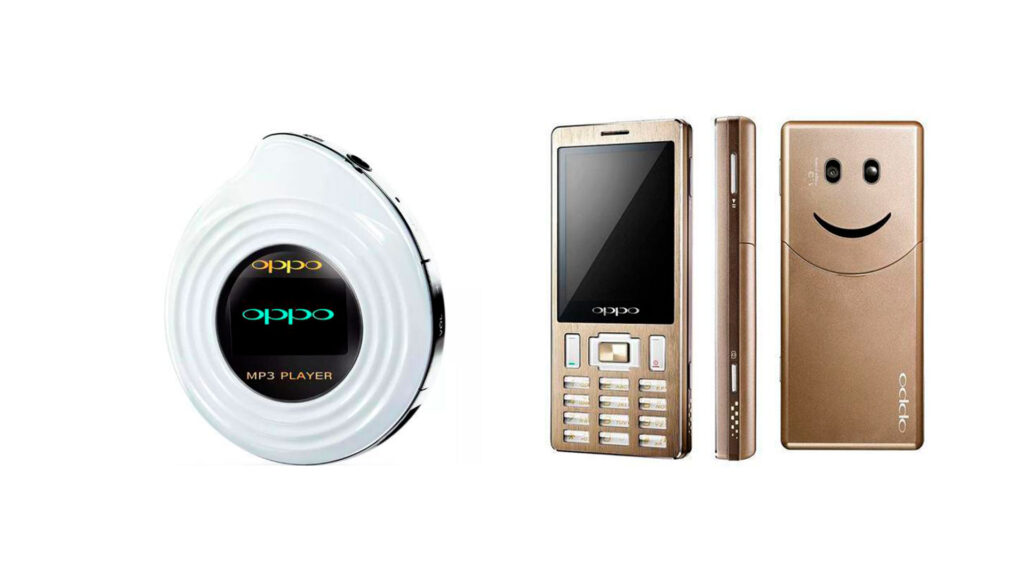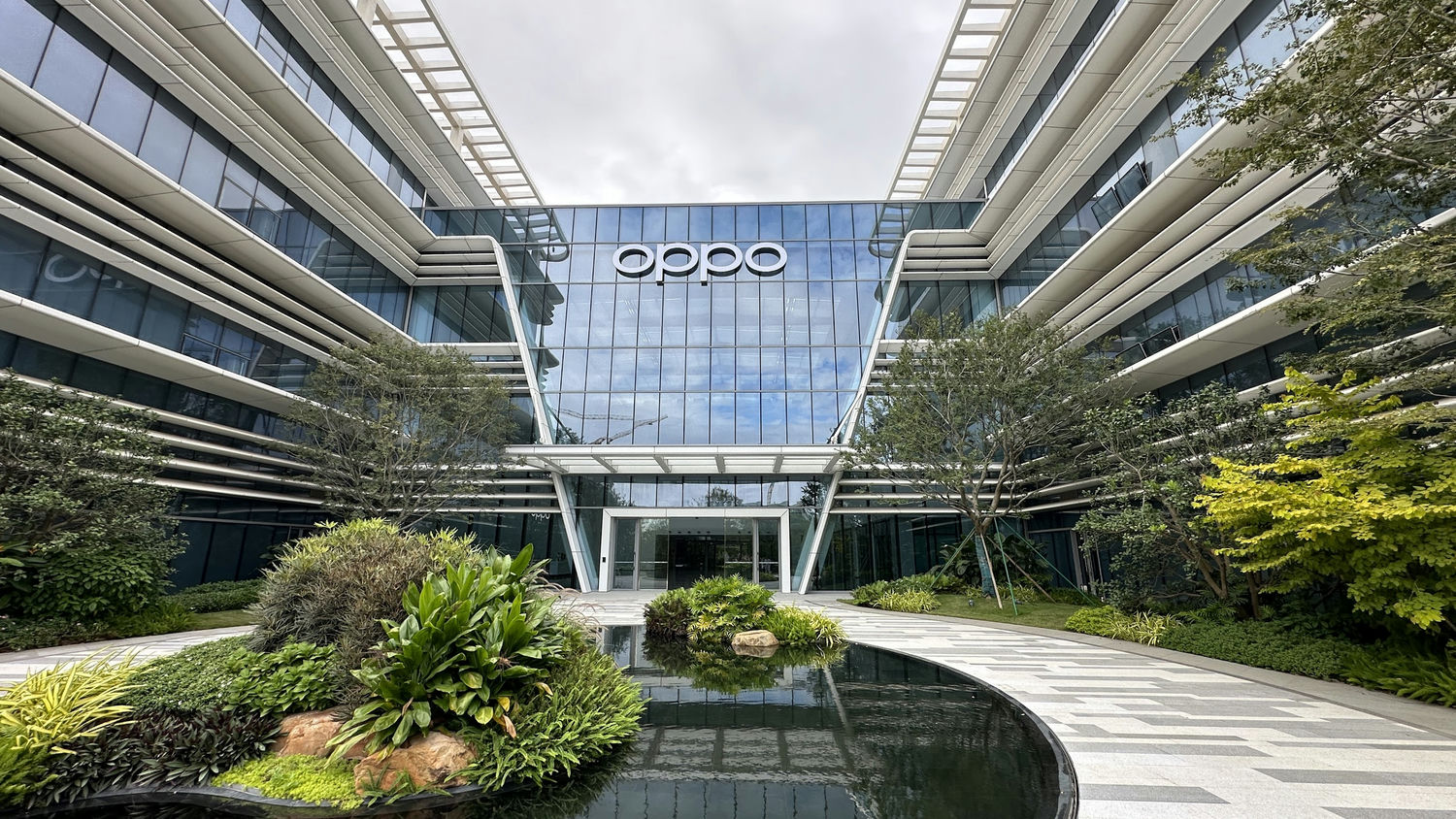SHENZHEN – I flew to what everyone considers the China’s Silicon Valley – Shenzhen – to see what’s behind a telephony giant like OPPO. The brand has now been present on the Italian market for several years and is now reopening the doors of its world to the international media to show how it works in those parts. Make yourself comfortable because it will be a long journey between remote campuses in the Chinese hinterland, sparkling skyscrapers in the heart of Shenzhen and laboratories of all kinds, but all with one common denominator: the very high concentration of automated robots.
The (short) history of OPPO
This story deserves to be told from the beginning.
OPPO it entered the European market as an outsider in 2018 and did so with arrogance, making even more space for itself – the following year – following Trump’s ban on Huawei. Yes, it’s true, in Italy it was an almost unknown brand despite the fact that it had already climbed the sales charts on the Asian continent. OPPO – it’s no mystery – is part of the group BBK Electronics, an electronics conglomerate based in the city of Dongguan that also carries other smartphone bands such as VIVO and OnePlus. Be careful though, each of the brands has its own identity; what makes OPPO a competitive company is the possibility of achieving economies of scale together with the other brands in the group.
In Italy it begins to make itself known not too quietly, covering cities and subways with billboards and purchasing advertising space on TV in order to spread the brand. Also because – let’s face it – they landed in Italy with a product that wasn’t even too “easy”: it was called OPPO Find X and it was a top of the range cameraphone launched on the market at a price just under 1000 euros. Its main feature? It had a motorized pop-up camera just wow. OPPO management certainly has no shortage of courage.
The company has a history that has its roots not too far in time: it was founded in 2004 and the following year it launched its first product, Oppo X3, an MP3 player that was very popular at the end of the last decade. Since then the rise has been constant, until the first and very cute smartphone with a smile was launched in 2008: OPPO A103.
 OPPO’s first product and first smartphone
OPPO’s first product and first smartphone
In this very lively and dynamic context, OPPO decides to open the doors of its various offices in and around Shenzhen to really show us – without filters – how we arrived at the products that almost all of us know today.
You may be wondering why I talked about locations in the plural. Because OPPO is currently scattered across various buildings in contexts that may even be in conflict with each other, waiting to transfer a large part of its staff to the new mega headquarters on Shenzhen Bay whose construction – which should end in 2025 – has been entrusted to the studio of architecture Zaha Hadid.
 OPPO headquarters in Shenzhen (ready in 2025) – project by Zaha Hadid studio.
OPPO headquarters in Shenzhen (ready in 2025) – project by Zaha Hadid studio.
Oppo in China: why Shenzhen
It is good to insert OPPO into the local context because it could help us better understand how things work in these parts. Shenzhen is considered – by the international press – China’s Silicon Valley. It is a special place because unlike the original one (on the San Francisco bay), here in addition to developing the design and software, the companies can count on the proximity of the production plants. The design and production process are united in a single supply chain which, moreover, has an exaggerated internal market available to be able to test its products: if in the United States there are 331 million inhabitants, China – as we all know by now – has surpassed by far one billion inhabitants.
However, Shenzhen’s “fortune” was not a coincidence, a series of astonishing astral conjunctures, because this city was carefully planned with Deng Xiaoping who in 1980 – with a view to opening up towards foreign countries – established 5 zones special economic ones which also included Shenzhen. The city therefore goes from being a simple fishing village to a metropolis with over 13 million inhabitants where most of the Chinese tech giants: beyond OPPO there are DJI, Tencent, Alibaba, Huawei, Hisense, Lenovo and many others.
If you want to delve deeper into this aspect of made-in-China technology, I suggest you read the recently published book “Technocine” by Simone Pieranni.
In this very lively context, although not free from shadows (construction sites under construction everywhere, several finished and empty skyscrapers), the different realities of OPPO that we have had the opportunity to see fit in. We were in the heart of the tech “district” of Nanshan (which has 1 million inhabitants) where we visited some of the laboratories where OPPO technicians develop and test various components of their smartphones (sometimes in partnership with other technological giants), then on to Shenzhen Bay to visit other offices in skyscrapers with an international scope and we also moved near Dongguan, where the production line where smartphones are assembled is located. We also visited the OPPO campus – a context totally different from the sneering one of the big metropolis – and finally in an area still under construction on Binhaiwan Bay where the OPPO AndesBrain data center, command center of the OPPO’s artificial intelligence (which for now is intended exclusively for the Chinese market).
What we saw
We spent three intense days in the company of the Chinese OPPO team who accompanied us to discover the history of the brand, showing us – without fear – the transformative process they are going through. Going from being a Chinese brand to becoming an international brand is neither an obvious nor a simple operation. China is truly a parallel universe, governed by beliefs, habits and laws that are sometimes diametrically opposed to those we experience every day in this part of the world. This premise is to try to explain the contrasts we saw without an attempt by the company to make them more beautiful following the arrival of visiting foreign media. The thing that impressed me most was the contrast between the immense Dongguan campus and the production line facility. The campus is clearly Chinese in style, at times gloomy, not very branded (it was almost difficult to understand that we were in one of the OPPO offices) so much so that I had to ask if that was actually an OPPO office. They told me yes: it’s called a campus because people work here but there are also apartments, basketball courts, canteens. A few minutes away by bus, however, there is the smartphone production line within which you can feel an international area: the branding is present and the alternation of the white and green colors reflect the brand’s guidelines.
These contrasts are a clear sign of the ongoing transformation that will lead OPPO to become even more of an international brand, making itself more understandable even in the eyes of an external visitor.
 Robot used inOPPO Automated Imaging Lab
Robot used inOPPO Automated Imaging Lab
One of the most unusual laboratories (on the Dongguan campus), which at times aroused the curiosity – but also the hilarity – of those present, is theOPPO Automated Imaging Lab. In a very large area they were rebuilt approximately 15 different settings that represent real (or at least plausible) life scenes: a grocery store, a restaurant with a laid table, a lounge, a dark and mysterious bar populated with mannequins. Now, what’s the point of all this? Simple: the engineers let two robots wander around these environments with smartphones mounted on their arms. The robots autonomously take more than 250 photos during a session and then return to their base, download the photos, have them analyzed by engineers and then potentially repeat this operation indefinitely. The advantage? The robots take identical photos between sessions (for framing and positioning, which a human would struggle to do with the same precision).
 OPPO Automated Imaging Lab
OPPO Automated Imaging Lab
According to OPPO engineers this robotic solution helps them create a standard for camera software and thus conduct more accurate tests to calibrate the performance of the shot.
Oh right, I told you about hilarity: there is also a version of the robot with the head of a mannequin with Asian features mounted on it and a mannequin with more Caucasian features. In this case the robot only takes selfie photos for the front camera setting. Seeing them operate live… it’s a bit of an uncanny valley.
 OPPO Communication Lab
OPPO Communication Lab
But you don’t live on photography alone because OPPO smartphones (as well as other devices such as smartwatches) need components that work well all over the world. For this purpose there is the Communication Lab, a place where the fundamental qualities of a smartphone are developed and tested, namely that of keeping us in communication with the world. This laboratory has a special room that It can simulate different connection conditions, from that of a train traveling at high speed to a crowded place. All situations that put our phones to the test.
The laboratory can also emulate the networks of various international operators, from the American AT&T to European networks, in order to ensure that OPPO smartphones comply with all communications protocols present in the various countries in which the brand’s smartphones are sold.

All the laboratories that…















Leave a Reply
View Comments